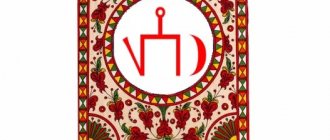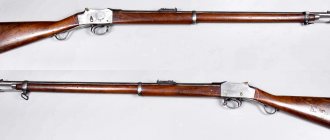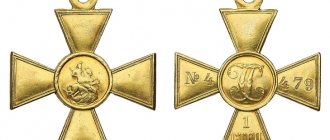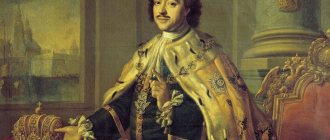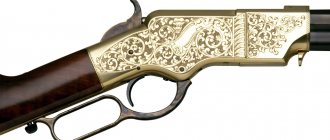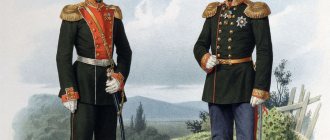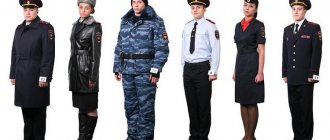- October 14, 2019
- Countries
- Vladimir Yakovlev
The state flag is the official distinctive feature of the state, its individual and unique symbol. The colors and images on the state flag often reflect the history of the life of the country, the peculiarities of the life of its people, and other distinctive features that the given state has. Sometimes the state emblem may also be placed on the state flag.
Sometimes the flag is a reflection of the current regime of the prevailing ideology in the country, its socio-political regime. In some cases, the appearance of the flag may reflect some fundamental event for the country, which, for example, served as the beginning for its formation as a sovereign state. The interpretation of the colors of the national flag is often free, and there are often several options for its interpretation.
First banner
The first banner that was used as a flag in Kievan Rus was red. Princes Oleg and Svyatoslav also went with him on military campaigns. At first, the red banner featured a bident, then a trident, but later, after the adoption of Christianity, during the time of Prince Vladimir the Red Sun, they were replaced by an Orthodox cross.
Interesting fact. In Rus', there is a period that was characterized by a colossal weakening of the country’s defenses, which was the reason for quite large defeats of the ancient Russian troops. This is a period of fragmentation, when the princes actually ceased to obey the Grand Duke, each moving to his own inheritance, and disputes between them became more frequent. During this period of time there was no single banner; each specific principality established its own banners.
Banner of the “Most Merciful Savior”
The banner of the “Most Gracious Savior” also has its own history - under this banner the assault on Kazan took place during the time of the last ruler from the Rurik dynasty, Ivan the Terrible. Later, during the reign of Queen Sophia, troops went on Crimean campaigns under this banner. A little later, during the reign of Peter I, this banner united soldiers in the campaign against Azov and in the Swedish war, which became known as the Northern War.
White-blue-red tricolor
January 1705 determined the formation of the flag, which today is the state flag of the Russian Federation. By decree of the first Emperor of Russia, Peter I, the white-blue-red flag was required to be flown on ships of the country's navy: both commercial and subsequently military. Since 1712, the St. Andrew's flag began to be used on warships.
List of all flags of the countries of the World and subordinate territories, with two and three letter codes (ISO 3166)
| Flag | A country | Country abbreviation Alpha3 ISO 3166-1 | Country abbreviation Alpha2 ISO 3166-1 |
| A | |||
| Abkhazia | ABH | AB | |
| Australia | AUS | AU | |
| Austria | AUT | AT | |
| Azerbaijan | AZE | AZ | |
| Åland Islands (Finland) | A.L.A. | AX | |
| Albania | A.L.B. | AL | |
| Algeria | DZA | DZ | |
| American Samoa (USA) | A.S.M. | AS | |
| Anguilla (UK) | AIA | A.I. | |
| Angola | AGO | A.O. | |
| Andorra | AND | AD | |
| Antigua and Barbuda | ATG | A.G. | |
| Argentina | A.R.G. | AR | |
| Armenia | ARM | A.M. | |
| Aruba (Netherlands) | ABW | A.W. | |
| Afghanistan | AFG | A.F. | |
| B | |||
| Bahamas | B.H.S. | B.S. | |
| Bangladesh | BGD | BD | |
| Barbados | BRB | BB | |
| Bahrain | BHR | B.H. | |
| Belarus | BLR | BY | |
| Belize | BLZ | BZ | |
| Belgium | BEL | BE | |
| Benin | BEN | B.J. | |
| Bermuda (UK) | BMU | B.M. | |
| Bulgaria | BGR | B.G. | |
| Bolivia | BOL | B.O. | |
| Bonaire (Netherlands) | BES | BQ | |
| Bosnia and Herzegovina | BIH | B.A. | |
| Botswana | B.W.A. | B.W. | |
| Brazil | BRA | BR | |
| British Indian Ocean Territory (UK) | IOT | IO | |
| British Virgin Islands (UK) | VGB | VG | |
| Brunei | BRN | BN | |
| Burkina Faso | B.F.A. | B.F. | |
| Burundi | BDI | B.I. | |
| Butane | BTN | BT | |
| IN | |||
| Vanuatu | VUT | VU | |
| Vatican (Holy See) | VAT | V.A. | |
| Great Britain | GBR | G.B. | |
| Hungary | HUN | HU | |
| Venezuela | VEN | V.E. | |
| US Virgin Islands (US) | VIR | VI | |
| Vietnam | VNM | VN | |
| G | |||
| Gabon | GAB | GA | |
| Haiti | HTI | HT | |
| Guyana | GUY | G.Y. | |
| Gambia | GMB | G.M. | |
| Ghana | G.H.A. | G.H. | |
| Guadeloupe (France) | GLP | G.P. | |
| Guatemala | GTM | GT | |
| Guinea | GIN | GN | |
| Guinea-Bissau | GNB | G.W. | |
| Germany | DEU | DE | |
| Guernsey (UK) | GGY | GG | |
| Gibraltar (UK) | GIB | G.I. | |
| Honduras | HND | HN | |
| Hong Kong (China) | HKG | H.K. | |
| Grenada | GRD | G.D. | |
| Greenland (Denmark) | GRL | G.L. | |
| Greece | GRC | GR | |
| Georgia | GEO | G.E. | |
| Guam (USA) | GUM | G.U. | |
| D | |||
| Denmark | DNK | DK | |
| Jersey (UK) | JEY | JE | |
| Djibouti | DJI | DJ | |
| Dominica | DMA | DM | |
| Dominican Republic | DOM | DO | |
| E | |||
| European Union | EU | ||
| Egypt | EGY | E.G. | |
| Z | |||
| Zambia | ZMB | ZM | |
| Zimbabwe | ZWE | ZW | |
| AND | |||
| Israel | ISR | IL | |
| India | IND | IN | |
| Indonesia | IDN | ID | |
| Jordan | JOR | JO | |
| Iraq | IRQ | IQ | |
| Iran | IRN | IR | |
| Ireland | IRL | I.E. | |
| Iceland | ISL | IS | |
| Spain | ESP | ES | |
| Italy | ITA | IT | |
| Y | |||
| Yemen | YEM | YE | |
| TO | |||
| Cape Verde | CPV | CV | |
| Kazakhstan | KAZ | KZ | |
| Cayman Islands (UK) | C.Y.M. | KY | |
| Cambodia | K.H.M. | KH | |
| Cameroon | CMR | C.M. | |
| Canada | CAN | C.A. | |
| Qatar | QAT | QA | |
| Kenya | KEN | KE | |
| Cyprus | CYP | C.Y. | |
| Kyrgyzstan | KGZ | KG | |
| Kiribati | KIR | KI | |
| China | CHN | CN | |
| Cocos (Keeling) Islands (Australia) | CCK | CC | |
| Colombia | COL | CO | |
| Comoros | COM | K.M. | |
| Congo, Democratic Republic | C.O.D. | CD | |
| Congo, Republic | COG | C.G. | |
| Kosovo (Republic of Kosovo) | XXK | XK | |
| Costa Rica | CRI | CR | |
| Ivory Coast (Ivory Coast) | CIV | C.I. | |
| Cuba | CUB | C.U. | |
| Kuwait | KWT | KW | |
| Curacao (Netherlands) | C.U.W. | CW | |
| L | |||
| Laos | LAO | L.A. | |
| Latvia | LVA | LV | |
| Lesotho | LSO | L.S. | |
| Liberia | LBR | LR | |
| Lebanon | LBN | LB | |
| Libya | LBY | LY | |
| Lithuania | LTU | LT | |
| Liechtenstein | LIE | LI | |
| Luxembourg | LUX | L.U. | |
| M | |||
| Mauritius | MUS | M.U. | |
| Mauritania | MRT | M.R. | |
| Madagascar | MDG | MG | |
| Mayotte (France) | MYT | YT | |
| Macau (China) | MAC | M.O. | |
| Malawi | MWI | M.W. | |
| Malaysia | M.Y.S. | M.Y. | |
| Mali | MLI | M.L. | |
| Maldives | MDV | MV | |
| Malta | MLT | M.T. | |
| Morocco | MAR | M.A. | |
| Martinique (France) | MTQ | MQ | |
| Marshall Islands | MHL | M.H. | |
| Mexico | MEX | MX | |
| Micronesia | FSM | FM | |
| Mozambique | MOZ | MZ | |
| Moldova | MDA | M.D. | |
| Monaco | MCO | M.C. | |
| Mongolia | MNG | MN | |
| Montserrat (UK) | MSR | MS | |
| Myanmar (formerly Burma) | MMR | MM | |
| N | |||
| Namibia | NAM | N.A. | |
| Nauru | NRU | NR | |
| Nepal | NPL | NP | |
| Niger | NER | NE | |
| Nigeria | N.G.A. | NG | |
| Netherlands | NLD | NL | |
| Nicaragua | NIC | NI | |
| Niue (New Zealand) | NIU | NU | |
| New Zealand | NZL | NZ | |
| New Caledonia (France) | NCL | NC | |
| Norway | NOR | NO | |
| ABOUT | |||
| United Arab Emirates (UAE) | ARE | A.E. | |
| Oman | OMN | OM | |
| Ascension Island (UK) | SHN | SH | |
| Clipperton Island (France) | CPT | C.P. | |
| Isle of Man (UK) | IMN | I.M. | |
| Navassa Island (USA) | UMI | U.M. | |
| Norfolk Island (Australia) | NFK | NF | |
| Christmas Island (Australia) | CXR | CX | |
| Wake Island (USA) | W.A.K. | W.K. | |
| South Georgia Island and South Sandwich Islands (UK) | SGS | G.S. | |
| Kerguelen Islands (France) | ATF | TF | |
| Cook Islands (New Zealand) | COK | CK | |
| Pitcairn Islands (UK) | PCN | PN | |
| Saint Helena (UK) | SHN | SH | |
| Turks and Caicos Islands (UK) | TCA | TC | |
| Chatham Islands (New Zealand) | CIT | NZ | |
| P | |||
| Pakistan | PAK | PK | |
| Palau | P.L.W. | PW | |
| Palestine | PSE | PS | |
| Panama | PAN | PA | |
| Papua New Guinea | PNG | PG | |
| Paraguay | PRY | PY | |
| Peru | PER | P.E. | |
| Poland | POL | P.L. | |
| Portugal | PRT | P.T. | |
| Transnistria (Pridnestrovian Moldavian Republic) | — | — | |
| Puerto Rico (USA) | PRI | PR | |
| R | |||
| Reunion (France) | REU | RE | |
| Russia | RUS | RU | |
| Rwanda | R.W.A. | RW | |
| Romania | ROU | R.O. | |
| WITH | |||
| Saba (Netherlands) | BES | BQ | |
| Salvador | SLV | SV | |
| Samoa | WSM | W.S. | |
| San Marino | SMR | S.M. | |
| Sao Tome and Principe | STP | ST | |
| Saudi Arabia | SAU | S.A. | |
| Saint Vincent and the Grenadines | VCT | V.C. | |
| North Korea | PRK | KP | |
| North Macedonia (formerly Macedonia) | MKD | MK | |
| Northern Mariana Islands (USA) | MNP | MP | |
| Seychelles | SYC | S.C. | |
| Saint Barthelemy (France) | BLM | B.L. | |
| Senegal | SEN | SN | |
| Saint Martin (France) | MAF | M.F. | |
| Saint Pierre and Miquelon (France) | SPM | P.M. | |
| Saint Kitts and Nevis | KNA | KN | |
| Saint Lucia | LCA | L.C. | |
| Serbia | SRB | R.S. | |
| Singapore | SGP | S.G. | |
| Sint Maarten (Netherlands) | SXM | SX | |
| Sint Eustatius (Netherlands) | BES | BQ | |
| Syria | SYR | S.Y. | |
| Slovakia | SVK | S.K. | |
| Slovenia | SVN | S.I. | |
| USA | USA | US | |
| Solomon islands | SLB | S.B. | |
| Somalia | SOM | SO | |
| Sudan | SDN | SD | |
| Suriname | SUR | S.R. | |
| Sierra Leone | SLE | SL | |
| T | |||
| Tajikistan | TJK | T.J. | |
| Thailand | THA | T.H. | |
| Taiwan | TWN | TW | |
| Tanzania | TZA | TZ | |
| Timor-Leste | TLS | TL | |
| Togo | TGO | TG | |
| Tokelau (New Zealand) | TKL | TK | |
| Tonga | TON | TO | |
| Trinidad and Tobago | TTO | TT | |
| Tristan da Cunha (UK) | SHN | SH | |
| Tuvalu | TUV | TV | |
| Tunisia | TUN | TN | |
| Turkmenistan | TKM | TM | |
| Türkiye | TUR | TR | |
| U | |||
| Uganda | U.G.A. | U.G. | |
| Uzbekistan | UZB | UZ | |
| Ukraine | UKR | U.A. | |
| Wallis and Futuna (France) | WLF | W.F. | |
| Uruguay | URY | UY | |
| F | |||
| Faroe Islands (Denmark) | FRO | F.O. | |
| Fiji | F.J.I. | F.J. | |
| Philippines | PHL | PH | |
| Finland | FIN | FI | |
| Falkland Islands (UK) | FLK | FK | |
| France | FRA | FR | |
| French Guiana (France) | GUF | GF | |
| French Polynesia (France) | P.Y.F. | PF | |
| X | |||
| Croatia | HRV | HR | |
| C | |||
| Central African Republic | CAF | CF | |
| H | |||
| Chad Republic of Chad | TCD | T.D. | |
| Montenegro | MNE | M.E. | |
| Czech | CZE | CZ | |
| Chile | CHL | C.L. | |
| Sh | |||
| Switzerland | CHE | CH | |
| Sweden | S.W.E. | S.E. | |
| Svalbard and Jan Mayen (Norway) | S.J.M. | S.J. | |
| Sri Lanka | L.K.A. | L.K. | |
| E | |||
| Ecuador | ECU | E.C. | |
| Equatorial Guinea | GNQ | GQ | |
| Eritrea | ERI | ER | |
| Eswatini (formerly Swaziland) | SWZ | SZ | |
| Estonia | EST | E.E. | |
| Ethiopia | ETH | ET | |
| YU | |||
| South Africa | ZAF | ZA | |
| South Korea | KOR | KR | |
| South Sudan | SSD | SS | |
| I | |||
| Jamaica | JAM | J.M. | |
| Japan | JPN | J.P. | |
Imperial standard
It is the imperial standard that people most often associate with the flag of the Russian Empire before 1917. However, this flag appeared only in the 19th century. Only in 1858 did Emperor Alexander II approve the new state flag of Tsarist Russia. The imperial flag had three horizontal stripes. Colors are black, yellow and white. The old flag of Russia as an empire, the white-blue-red tricolor, remained for the navy.
Interesting fact. In 2014, LDPR deputy Mikhail Degtyarev took the initiative to replace the usual white-blue-red tricolor with the black-yellow-white flag of the Russian Empire before 1917.
The deputy was motivated by curious considerations. He argued that the times of the imperial standard were a kind of “golden age” of Russia, that it was under the black-yellow-white flag that our state experienced its heyday. For example, under the imperial banner the territory of the Russian state was significantly increased; the Crimean Peninsula, part of the territory of East Prussia, Poland, Central Asia, Finland, the Baltic states, Alaska and the Caucasus were included. The legislator noted that many outstanding victories of the Russian army in military campaigns were won under the black-yellow-white standard. M. Degtyarev also spoke about continuity: in his opinion, the historical heritage of thousand-year-old Russia is symbolized precisely by the colors of the imperial standard.
Opinions are divided here. In particular, back in 1896, before the coronation of the last Emperor of Russia, Nicholas II, the white-blue-red flag became the official state flag of the Russian Empire. It was emphasized that the folk colors of the Russian people are rooted in the folk life and natural features of the country, and, based on this, white, blue and red colors are the most accurately reflective of folk taste and folk customs.
“On holidays, a Great Russian peasant wears a red or blue shirt, a Little Russian and a Belarusian wear a white one; Russian women dress in sundresses, also red and blue. In general, in Russian terms, what is red is good and beautiful...
If we add to this the white color of the snow cover, in which all of Russia is clothed for more than six months, then, based on these signs, for the emblematic expression of Russia, for the Russian national or state flag, the colors established by the Great Peter are most characteristic.”
According to the official interpretation, the black color of the banner reflected the color of the black double-headed eagle, the yellow color corresponded to the field on the coat of arms of the Russian Empire, and the white color corresponded to the cockade of Peter the Great.
According to another version, black stands for the people, yellow for autocracy, and white for Orthodoxy. Thus, the Orthodox faith is the foundation of autocratic monarchical power, and autocracy and Orthodoxy are what are the basis of the life of the Russian people.
Controversy
In the next 15-20 years, the white-yellow-black flag as a state banner was perceived unambiguously and was not disputed. But closer to the 70s of the 19th century, opposition from liberal circles, opposing the monarchical system, strengthened in the empire. Its representatives wanted the country to begin to follow the Western model of development. As a result, they had a craving for European symbols. The flag approved by Peter I to some extent relates to European symbols.
The monarchists advocated the preservation of the imperial flag. Their motives are quite clear: one people means one Empire, and therefore one imperial flag. What all this means is that the country is invincible and strong.
State national flag 1914
This version of the state flag of the Russian Empire was, perhaps, extremely controversial due to its heterogeneity. This is understandable, given the political situation that developed at the beginning of the 20th century both within the Russian state and on the world stage.
Discussions over the colors of the official state flag have intensified in the country. The monarchists demanded the return of the imperial version of the black, yellow and white standard. The red symbols of the revolution that took place in 1905-1907 increased tension, as a result of which a compromise was adopted. In the upper left corner of the tricolor, in the most honorable place in heraldry, a black imperial double-headed eagle was placed. However, it is noteworthy that the eagle did not have titular coats of arms on its wings.
The national flag of the Russian Empire symbolized the unification of the emperor with the people, which was especially important to emphasize during the outbreak of the First World War in 1914. However, the official use of this flag was permitted, but not mandatory.
Strengthening the unity of the nation
The Patriotic War with Napoleon ended, and the white-yellow-black flag began to be hung only on holidays. The existence of the flag in this form lasted only until its official adoption. Nicholas I ordered the colors of the future imperial flag to be used on the cockades of civil servants.
Nicholas I generally sought to adopt state symbols and attributes. He was convinced that this could strengthen the unity of the nation. That is why the emperor approved the patriotic anthem “God Save the Tsar” as the state one.
What happened next?
The flags of Tsarist Russia until 1917 still maintained some continuity. After the February Revolution of 1917 and the overthrow of the Romanov dynasty, it was decided to leave the original version of the white-blue-red tricolor, since this flag did not depict any dynastic emblems, it did not carry any references to the overthrown regime of monarchical power. But the white-blue-red tricolor lasted less than a year in Republican Russia in 1917. After the October Revolution, the red banner of the RSFSR became the official flag, and later, in 1924, the famous red banner with the image of a hammer and sickle, which became the state flag of the USSR for many 70 years.
Today's Russian flag, the good old white-blue-red tricolor, is perhaps the most suitable for our country in all respects. Its roots go back to our historical past, and its colors most accurately reflect the original culture and history of both the Russian people and Russian statehood.
Meaning of colors
The colors of the imperial banner of Russia have a deep meaning that makes you think about the past, present and future of the state.
- The black color was borrowed from the official symbol of Russia, where it was represented by a double-headed eagle, representing the greatness of the country, royal power, invincibility, and the immutability of historical borders. This is the personification of the sovereign coat of arms of the empire.
- The yellow stripe means the field under the soaring eagle. In addition, it represents the spirituality, orientation towards moral growth and steadfastness of character of the Russian person. In addition, this color is interpreted as a reference to Byzantium, the Orthodox foremother of Russia.
- White (or silver) is the color of St. George the Victorious piercing a dragon with a spear. He has been the protector of Russian lands for many centuries. In addition, it is the color of the sacrifice of the Russian people.
